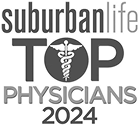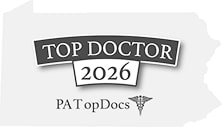Back and Spine Pain Treatment
Back and spine pain can result from muscle strain, disc injury, or nerve irritation that disrupts your body’s natural alignment. At Meeting Point Health, we take a regenerative, whole-body approach to uncover the root cause and promote true healing. Through advanced treatments like PRP and Stem Cell Therapy, we help restore stability, reduce inflammation, and bring your body back into balance—so you can move freely and live without pain.
Regenerative Orthopedics for Back Pain
Struggling with back pain that holds you back from enjoying life? At Meeting Point Health in Philadelphia, Dr. Stephen Matta offers groundbreaking regenerative orthopedic treatments designed to relieve pain, restore movement, and help you avoid surgery. Using state-of-the-art therapies like PRP and stem cell treatments, Dr. Matta targets the root cause of your pain for long-lasting results. Don’t settle for temporary fixes—experience a personalized, proven approach to healing. Your path to pain-free living starts here.
What Are Common Types of Back Pain?
Back pain can be either acute or chronic. It may be sharp or dull, constant or throbbing, and may come and go in flares. It can cause stiffness, reduce range of motion, and refer pain to other areas of the legs.
Acute Pain is sudden and temporary and usually lasts less than 3 months.
Chronic Pain is gradual and recurrent, making everyday life difficult.
Back Pain is categorized by location:
- Cervical or Neck Pain
- Thoracic or Mid-Back Pain
- Lumbar or Low Back Pain
- Sacral or SI Joint Pain
What Are The Symptoms of A Back Injury?
- Numbness or Tingling
- Muscle Weakness
- Limited Range of Motion
- Spasms
- Pain Worsened by Movement
- Pain at Rest
- Localized Pain
- Swelling or Bruising
- Stiffness
- Tenderness
- Radiating Pain
- Numbness or Tingling
- Muscle Weakness
- Limited Range of Motion
- Spasms
- Pain Worsened by Movement
- Pain at Rest
- Localized Pain
- Swelling or Bruising
- Stiffness
- Tenderness
- Radiating Pain
If you’re experiencing these symptoms, it’s important to seek an evaluation to determine the best course of treatment. At Meeting Point Health, we specialize in personalized care to reduce pain, restore mobility, and prevent further damage. Call us today to request a consultation.
How To Diagnose Back Pain?
At Meeting Point Health, Dr. Matta begins back pain treatment with a thorough assessment, including a medical history review, physical exam, and ultrasound diagnostics. He evaluates symptoms, mobility limitations, and any previous injuries. The physical exam includes orthopedic, functional movement, and neurokinetic assessments. Using ultrasound, Dr. Matta examines the internal structures of the back to recommend personalized treatment options for back pain relief.
What Are The Most Common Back Injuries?
Muscle Spains and Strains
Sprains and strains occur when ligaments or muscles in the back are overstretched or torn due to improper lifting, overuse, or sudden twisting movements. Symptoms include pain, swelling, and reduced range of motion.
Herniated Disc
A herniated disc, also known as a slipped or ruptured disc, happens when the soft, gel-like center of a spinal disc protrudes through its tougher outer layer. This can press on surrounding nerves, causing pain, numbness, or weakness, particularly in the lower back or legs. This condition is often linked to aging, repetitive strain, or trauma.
Sciatica
Sciatica refers to the compression or irritation of the sciatic nerve, which runs from the lower back down through the buttocks and legs. This condition causes sharp, shooting pain that radiates along the nerve’s path and may also lead to numbness or tingling. Sciatica is frequently caused by herniated discs, bone spurs, or spinal stenosis.
Spinal Fractures
Spinal fractures occur when one or more vertebrae in the spine break due to trauma, falls, or conditions like osteoporosis. These fractures can cause intense back pain, instability, and in severe cases, neurological symptoms such as numbness or paralysis. Immediate medical attention is critical.
Spondylolisthesis
Spondylolisthesis occurs when a vertebra slips out of place, often due to stress fractures, degenerative conditions, or congenital defects. This misalignment can lead to chronic lower back pain, stiffness, and nerve compression symptoms like radiating leg pain.
Spinal Stenosis
Spinal stenosis is the narrowing of the spinal canal, which puts pressure on the spinal cord and surrounding nerves. Common in older adults, it often results in back pain, numbness, or weakness in the legs, especially after prolonged standing or walking.
Facet Joint Injuries
Facet joint injuries involve inflammation or wear and tear of the small joints between vertebrae that allow flexibility in the spine. These injuries are commonly associated with arthritis, repetitive stress, or trauma and result in localized back pain, stiffness, and difficulty bending or twisting.
SI Joint Dysfunction
Sacroiliac joint dysfunction is caused by abnormal movement or inflammation in the SI joint, which connects the spine to the pelvis. It can result from injury, pregnancy, or degenerative changes, leading to pain in the lower back, buttocks, or thighs.
Degenerative Disc Disease
Degenerative disc disease refers to the natural wear and tear of spinal discs over time, reducing their ability to cushion the vertebrae. This can lead to chronic pain, stiffness, and occasional flare-ups of more severe discomfort.
Bulging Disc
A bulging disc occurs when a spinal disc protrudes slightly beyond its normal boundary but doesn’t rupture. This can compress nearby nerves and lead to mild to moderate pain, stiffness, or tingling sensations. Bulging discs often result from aging, repetitive motion, or improper posture.
Back Pain Treatment Options in Philadelphia
Prolotherapy
Prolotherapy therapy is a medical injection procedure whose goal is to relieve pain and promote healing of musculoskeletal conditions, especially involving ligaments, joints, and tendons. Prolotherapy stimulates healing, causes inflammatory responses that increase blood flow and the arrival of immune cells and growth factors to the injection area, and tissue repair.
PRP Therapy
Platelet-rich plasma PRP therapy is a medical treatment that involves the use of a patient’s own blood to promote healing and tissue regeneration. Once injected, the growth factors and other bioactive substances in PRP work to accelerate tissue repair, reduce inflammation, and promote the formation of new blood vessels. This helps in reducing pain, improving function, and enhancing the overall healing process.
Stem Cell Therapy
Stem cell injection therapy refers to a medical procedure in which stem cells are harvested from live, healthy birth tissue and then injected into a localized area on a patient’s body, typically to promote tissue repair, and regeneration, or to treat various medical conditions. Stem cells are unique because they can develop into different types of cells in the body, and they also have the capacity for self-renewal. This makes them valuable in medical treatments, as they can potentially replace or repair damaged or diseased tissues. Stem cell injection therapy can treat arthritic joints, sports injuries, tendinopathies, non-union fractures, meniscal tears, Degenerative Disc Disease, and Osteonecrosis or Avascular Necrosis.
Prolozone
Prolozone therapy is a mixture of ozone gas and a prolotherapy solution is injected into the affected area, often around joints, ligaments, or tendons. The theory is that this combination not only irritates and strengthens the tissues (like prolotherapy) but also delivers the potential therapeutic benefits of ozone, such as improved circulation and tissue oxygenation. Prolozone combines procaine, dextrose, B vitamins, saline, oxygen, and ozone into a damaged joint and the combination allows for regrowth of damaged tissue.
Nerve Hydrodissection
Nerve hydrodissection involves the use of ultrasound-guided injections of an aqueous regenerative solution such as peptides to flush space around an entrapped nerve.
Peptide Therapy
Peptide Therapy can be introduced as an at-home treatment, and in-office for joint injection and nerve hydrodissection purposes. Peptide therapy introduces peptides to signal communication with our cells to perform a specific response. Administrating peptides elicits a response to regulate or improve physiological functions. For regenerative medicine, peptides for wound recovery, and tissue repair, reduce inflammation, accelerate recovery time, and promote cell migration and differentiation.
Acupuncture
Medical acupuncture uses needles to stimulate nerve activity, initiate muscle firing and induce the release of chemical substances such as neurotransmitters, endorphins, and hormones. This helps to reduce pain and boost your body’s natural healing ability.








